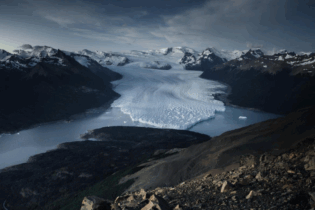In 2008, Transnet Limited awarded the Veolia Water subsidiary, Veolia Water Solutions & Technologies South Africa, a contract to design, build and commission a new reverse osmosis desalination plant at its iron ore terminal situated at the Port of Saldanha. With construction and a performance test completed in August 2012, Transnet now has access to its own constant supply of high-quality water for use in dust suppression and a range of other tasks.
“Initially, the plant would have consisted of only one desalination unit capable of handling 1 200 m³/d of water, but Transnet has elected to double the plant’s capacity. This is in reaction to the parastatal’s intention to further reduce its dependency on municipal water, and is in accordance with future expansion projects,” says Cobus Olivier, engineering manager, Veolia Water Solutions & Technologies South Africa (Paarl). The reverse osmosis (RO) plant, as part of a turnkey project executed by Veolia’s Design & Build division based in Paarl, now consists of two units – taking its capacity to 2 400 m³/d. The plant has the capacity to be upgraded to 3 600 m³d by adding a third RO unit in future. It consists of an open seawater intake system, a pretreatment system to limit the effects of red tide and hydrocarbons, seawater reverse osmosis units for desalination, a clean-in-place system, an energy recovery system, and storage tanks. “As a result of the nutrient-rich Atlantic waters, we’ve had to install a pipeline pigging system to flush barnacles and other marine organisms from the 1.1 km intake pipeline,” says Olivier. To minimise the plant’s effects on surrounding seawater salinity, Veolia has also built a highly efficient brine disposal system. A key element of the plant’s design is the energy recovery system. Olivier explains: “Higher pressure, and thus more power, is needed to reject the salt in the desalination process. Based on specialised technology that has only become viable recently through advanced engineering, the recovery system directs unused energy from the reverse osmosis process to the beginning of the process, resulting in lower power consumption overall.”Veolia has further been contracted to operate and maintain the plant during its first 12 months with the help of a plant supervisor, lab technician and two operators. “Veolia is responsible for generating and implementing the maintenance plan, schedules and work charts,” says Olivier.
Desalinating seawater with new-generation technology The plant has been designed to cope with red tide – a frequent occurrence on the west coast of South Africa triggered by explosive growths of phytoplankton. “Phytoplankton, and its residues, can cause serious RO membrane fouling if not removed before the desalination process,” says Olivier. “The other risk to the plant includes oil and hydrocarbons from ships in the harbour. If not removed, these substances blind the RO membrane surface, rendering them significantly less effective for desalination.” The recent performance tests in Small Bay, Saldanha Bay, have proved Veolia’s conservative pretreatment designs to be effective in protecting the membranes from these fouling elements. Locally, Veolia has designed, built and commissioned desalination plants in Plettenberg Bay, Mossel Bay, Bushmans River Mouth, Knysna and Cannon Rocks, and was also recently awarded a contract for a new plant in Lamberts Bay. Desalination plants fall within the company’s global SVR (service, value and responsibility) strategy that sees increased value for Veolia’s customers, and improved social and environmental responsibility through increased service capability.






